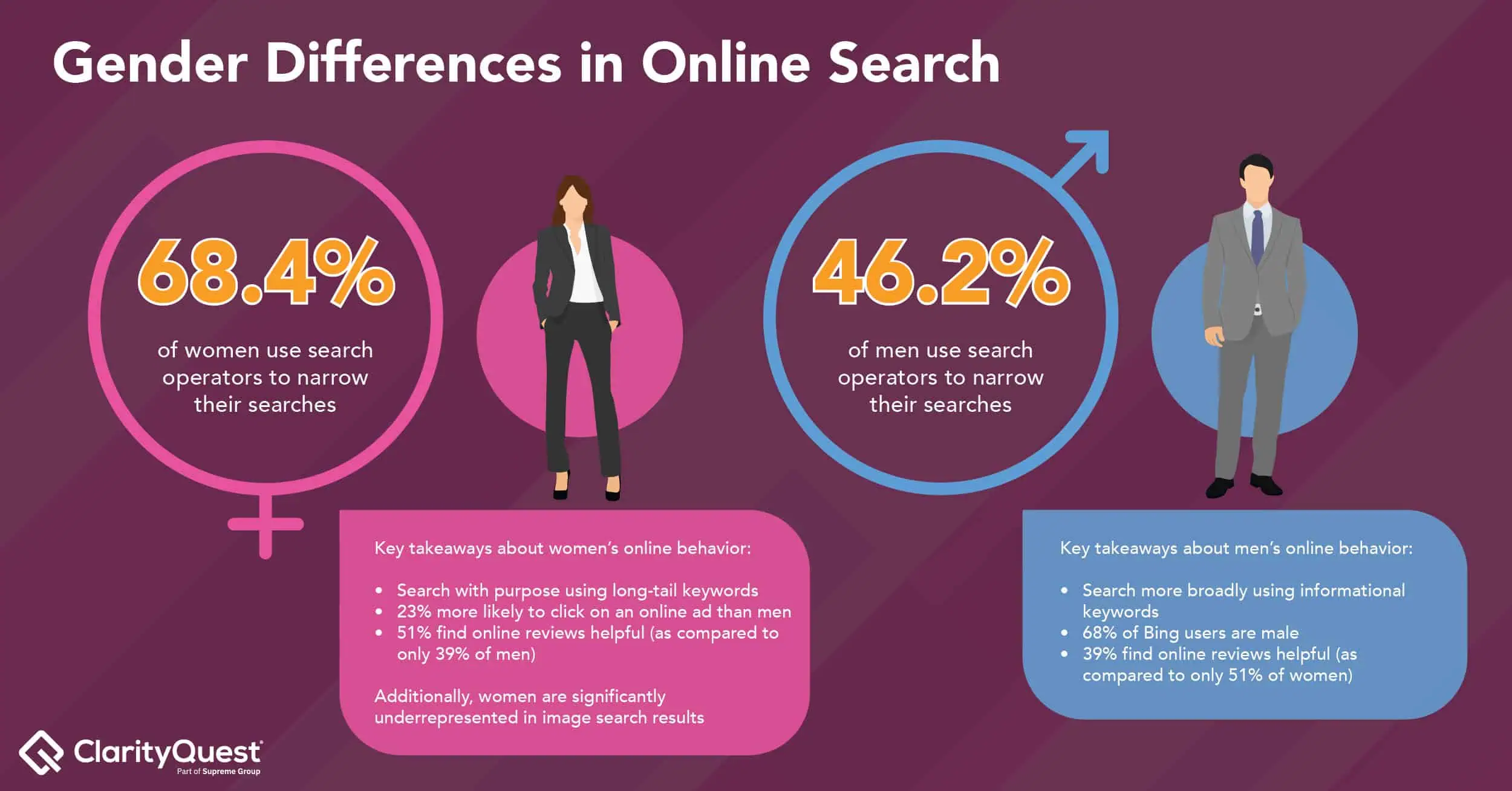Understanding patterns in consumer digital behavior is essential to reaching your target audience most efficiently.
In the crowded field of healthcare software marketing, applying this knowledge purposefully to your SEO and digital advertising strategies can give your organization a significant market advantage.
Gender differences in online search behavior are an area ripe for additional research and exploration in developing strategic marketing plans.
Statistics about gender differences in search behavior
1. Use of narrow vs. broad search keyphrases. How people use search engines to find information and their responses to ads can vary.
- 68.4% of women, compared to only 46.2% of men, use search operators to narrow their searches, meaning women are more likely to use long-tail keywords and be specific in their search behavior than men.
- Research has also found business women are 23% more likely to click on online ads than men, making ads served in response to the long-tail keywords favored by women more valuable.
2. Search beyond Google. There’s more to search results than Google.
- More people are using social networking sites to search for companies, brands and products—and more women than men are inclined to do so.
- While Google is pretty evenly split between male and female users, Bing users are 68% male.
3. Rise in image search. When it comes to your search strategy, remember the increasing relevance of images and alt-image tags.
- More than 10% of Google search volume comes from images.google.com, equating to 1B+ image searches per day.
- However, gender bias and reinforcement of stereotypes in search results are well-documented. For example, one study found that when you search “CEO” in Google Images, approximately 11% of the results feature women, even though 28% of CEOs in the US are women—and the first woman featured was a Barbie doll.
4. Trust in online reviews. While it’s not exactly Yelp status, B2B marketers know online reviews and testimonials from like-minded peers are essential to the purchase decision.
- While the percentage of men and women who conduct an online search during the buying process is fairly equal, 51% of women, compared to only 39% of men, find customer reviews helpful.
- Interestingly, online reviews written by women are perceived as being more authentic than those written by men.
Knowing your target persona drives marketing plan strategy and ad spend
While statistics about gender differences in online behavior are interesting, you may be wondering how to use this information to drive B2B marketing decisions.
The biggest takeaway for marketers is a reminder that your target personas are real people. They are more than a job title and a deeper understanding of their motivations, goals, and behaviors can help drive your marketing plan, including what channels to invest in.
Here are two examples of what that looks like in practice:
- If your target audience is primarily comprised of women, invest in more visual content that doesn’t alienate while ensuring it is optimized for long-tail keyphrases easily found via image search and focus on securing customer reviews and testimonials that could rank for niche industry keyphrases.
- If your target audience is primarily male, consider prioritizing more informational content that ranks for broader SEO keywords and testing Microsoft Bing Ads against Google results in paid search.
As gender identities evolve, it will be interesting to see how differences in online search behavior also change.
Note: This blog post was originally posted on February 27, 2016, and has been updated to reflect newer stats.



